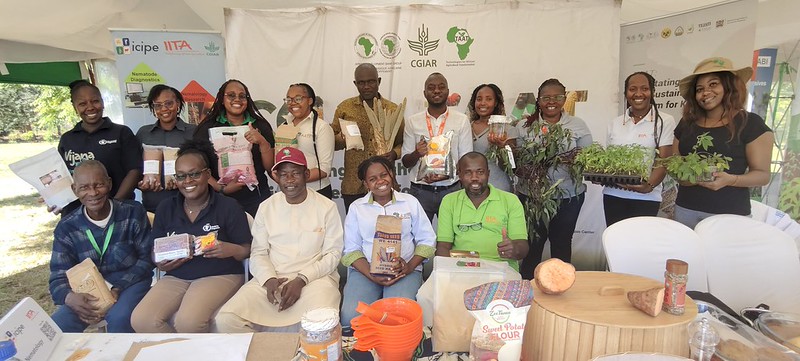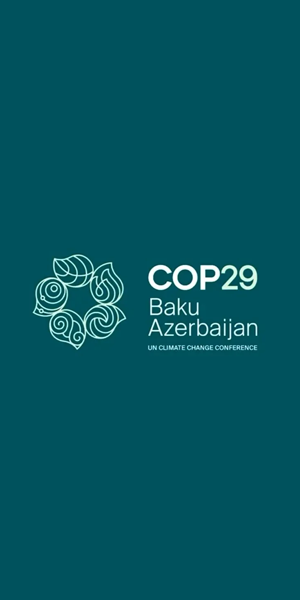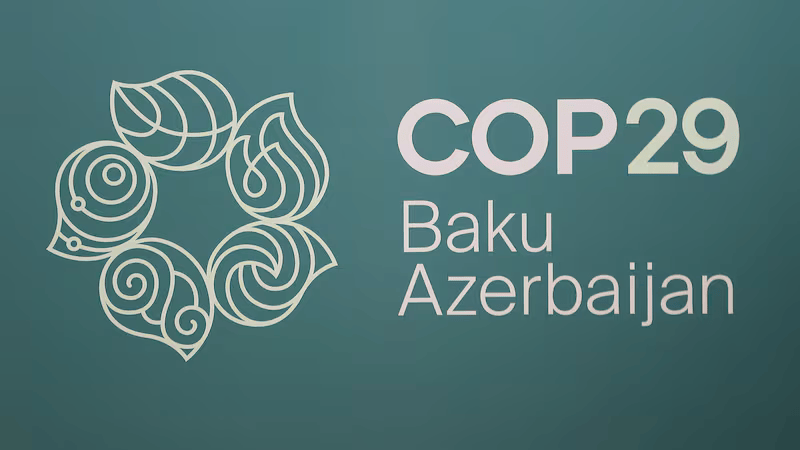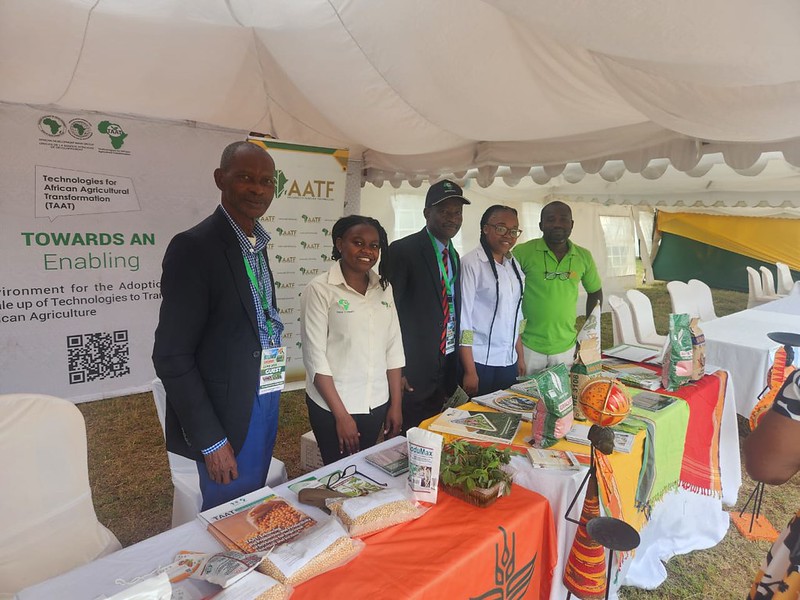
By Deborah Olaoluwa
The imperative to catalyse agricultural transformation and forge robust market connections took centre stage at the recent Kilimo Biashara Expo, held from March 13th to 14th, 2025, at the Kenya Agricultural and Livestock Research Organisation (KALRO) Headquarters in Thika, Kenya.
This pivotal agricultural trade fair highlighted the crucial role of cutting-edge technologies in enhancing food and nutrition security across the East African region.
The distinguished event brought together diverse agricultural stakeholders, including dedicated farmers, insightful researchers, and forward-thinking policymakers, fostering dynamic discussions on innovative agricultural methodologies and groundbreaking innovations.
The presence of esteemed dignitaries, notably the Chairman of the KALRO Board, the Honourable Member of Parliament for the Gatanga constituency, and the esteemed Director General of KALRO, lent significant weight to this vital initiative aimed at propelling Kenya’s agricultural advancement and fortifying its food security objectives.
TAAT at the Kilimo Biashara Expo, Kenya
TAAT joined over 5,000 participants at the Kilimo Biashara Expo in Kenya under the theme “Linking Farmers to Agricultural Innovations for Increased Food and Nutrition Security.”
As a Platinum Sponsor, TAAT showcased cutting-edge technologies across multiple compacts and launched the Kenya National Soybean Campaign alongside government leaders, KALRO, and key partners.
With high-level dignitaries in attendance and strong media visibility, TAAT earned the Best Overall Exhibitor award, cementing its leadership in scaling agri-tech solutions in East Africa.
Soybean Campaign Cultivates a New Era
A landmark moment at the Kilimo Biashara Expo 2025 was the auspicious launch of the Kenya National Soybean Campaign.
This ambitious initiative is poised to invigorate local soybean production, strengthen national food security, and lessen reliance on international imports.
By galvanising farmers nationwide, the campaign endeavours to expand the cultivation of soybeans, a crop celebrated for its rich nutritional profile and its versatility as both a vital food source and essential animal feed.
Nurturing Soybean’s Growth
The primary objective of this national soybean campaign is to significantly increase domestic soybean production to effectively meet the growing demand for protein in both human consumption and animal nutrition.
Several influential leaders articulated the profound potential of soybeans in enhancing food security, emphasising, “Soybeans offer remarkable versatility, serving as both a nutritious food crop and a valuable component of animal feed, with a relatively short three-month maturity cycle.”
They underscored the existing robust demand for protein sources within the animal feed industry and passionately advocated for the widespread adoption of soybean farming practices among local farmers to fortify food security.
One prominent speaker aptly noted, “Our core agenda was to delve into the potential of soybeans and chart strategic pathways for enhancing annual production,” highlighting the pressing need to amplify local soybean yields.
Professor David Ojo, the esteemed leader of the TAAT Soybean Compact at the International Institute of Tropical Agriculture (IITA), drew attention to the critical imperative of substituting imported soybean oil, previously sourced from regions like Ukraine and Russia, with domestically cultivated produce.
He emphatically stated, “It is of paramount importance that we strategically shift our focus towards cultivating soybeans within our own borders to safeguard our food security and attain greater economic independence.”
Furthermore, Professor Ojo stressed the indispensable role of empowering farmers through comprehensive training in contemporary soybean cultivation techniques, asserting, “Equipping our farmers with knowledge of modern agricultural practices will be absolutely vital in maximising our soybean production and ensuring its resounding success in the marketplace.”
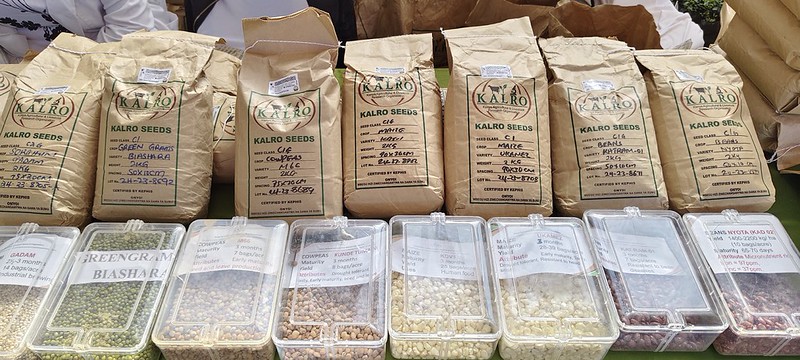
Seed Availability Takes Root
A significant announcement during the campaign launch was the immediate availability of 42 metric tons of high-quality soybean seeds for eager farmers ready to embrace soybean cultivation.
This proactive measure is strategically designed to facilitate immediate planting and establish a solid foundation for thriving soybean farming practices throughout the region.
One insightful speaker remarked optimistically, “It is our sincere hope that with the full utilisation of these seeds, we will witness an even greater harvest in the coming year, with an ambitious yet achievable target of 500 metric tons within the next two years.”
Cultivating Collaboration and Support
The campaign enjoys robust support and active collaboration from various key stakeholders, including KALRO, the Government of Kenya, TAAT, and various committed agricultural development partners.
These synergistic efforts are pivotal in successfully integrating soybean farming practices within local communities.
Local leaders voiced their unwavering commitment to championing soybean cultivation, stating resolutely, “We are determined to see the farmers in Gatanga actively planting soybeans, and we pledge our full support in this vital endeavour.”
Economic Growth Sprouts
Distinguished speakers highlighted the significant potential for increased income generation for farmers and the substantial reduction in food import expenditures, underscoring the compelling economic advantages inherent in soybean farming.
“Why should we continue to import soybeans when we possess the inherent resources and proven capacity to cultivate them right here on our own land?
By strategically investing in soybean production, we can substantially lower food prices and tangibly improve the livelihoods of our hardworking farmers,” remarked one influential local leader.
Nurturing Awareness and Knowledge
The campaign will also emphasise comprehensive farmer education regarding the multifaceted benefits of soybeans and the adoption of optimal cultivation practices.
Strategically planned workshops and targeted training sessions will equip farmers with the essential knowledge and skills to maximise their yields and seamlessly integrate soybeans into their existing cropping systems.
Strengthening Institutional Partnerships for Soybean Transformation
Representing TAAT’s engagement efforts in East Africa, Yarama Ndripaya, Country Engagement Officer, underscored the importance of strategic partnerships with government and national research systems.
“This campaign is a testament to what we can achieve when development partners align with national priorities,” he stated. He commended KALRO’s leadership and reiterated TAAT’s commitment to supporting Kenya’s soybean agenda through targeted interventions that are both scalable and sustainable.
“Our role is to facilitate these kinds of public-private collaborations that not only provide improved seeds but also build institutional capacity and drive policy conversations forward,” he noted.
He emphasized that TAAT’s approach goes beyond inputs—it is about enabling systems that work for farmers. “This is how we build trust—with consistency, accountability, and local ownership.”
ENABLE TAAT: Empowering Youth in Agribusiness
Lorraine Mutinda eloquently presented the diverse array of technologies championed by the ENABLE TAAT program, highlighting the impressive range of value-added agricultural products and sustainable organic fertilizers.
She proudly remarked, “The young entrepreneurs associated with ENABLE TAAT showcased an inspiring collection of value-added products, powerfully demonstrating the immense potential of Kenya’s next generation of agricultural leaders.”
The ENABLE TAAT initiative empowers youth with the tools, knowledge, and mentorship to turn their agricultural ventures into successful enterprises.
Lorraine emphasized the transformative impact of these technologies, which foster innovation and contribute to local economies by creating employment opportunities and enhancing the sustainability of agricultural practices.
At the Kilimo Biashara Expo 2025, all youth-led ventures, including those from ENABLE TAAT, were given a unique opportunity to showcase their innovations.
Each youth had a stand-alone space, under a youth empowerment banner, catered by the organizers and TAAT, fully showcasing their agribusiness ventures.
This allowed them to directly interact with visitors, potential investors, and partners, elevating the visibility of youth-driven agricultural enterprises.
As Welissa Mulei remarked during her presentation of TAAT on day two of the Expo at the request of participants, “Empowering young people is the cornerstone of transforming the agricultural sector, ensuring lasting food security, driving sustainable economic growth, and fostering partnerships that are key to the sustainability of development.”
“By working together, established organizations and youth-led ventures can address the sector’s greatest challenges, paving the way for a resilient, future-ready agricultural landscape,” she said.
The inclusion of youth in agribusiness ventures is vital for the future of agriculture and a key driver of innovation. As programmes like ENABLE TAAT support more young people, they gain the confidence, skills, and resources necessary to push the boundaries of agricultural practices.
This support addresses some of the sector’s greatest challenges, including food security, environmental sustainability, and market access.
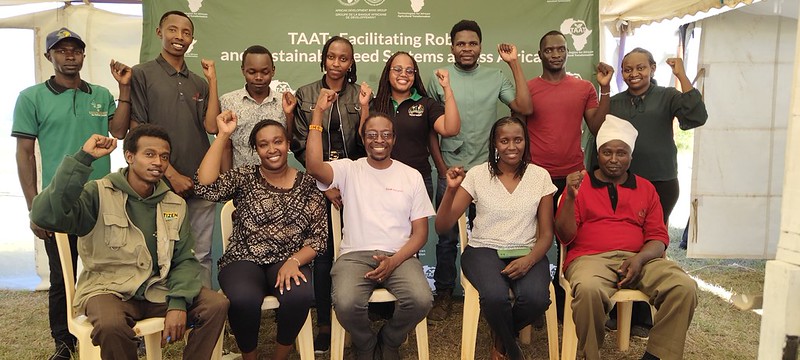
Technology Showcase Blossoms with Innovation
The expo served as a vibrant platform for various agricultural Compacts under the TAAT initiative, each showcasing transformative technologies and impactful practices.
Speaking on High Iron Beans Processing, Elizabeth Mulika of the TAAT High Iron Bean Compact led by Alliance Bioversity International – CIAT, passionately demonstrated the creation of value-added products from iron-rich bean (HIB) varieties, emphasising their significant nutritional advantages.
Her showcase featured pre-cooked beans, nutrient-dense bean flour and bean ready-to-eat cookies, dramatically reducing cooking time while providing essential micronutrients.
A key focus was empowering others through nutrition training and the skilful preparation of diverse products derived from high-iron beans.
Rosemary Gatimu and Laban Ahija from the TAAT Orange-Fleshed Sweet Potato (OFSP) Compact led by the International Potato Centre (CIP) presented a compelling array of OFSP varieties, highlighting their exceptional nutritional benefits and remarkable versatility in culinary applications.
Rosemary Gatimu, who works in germplasm management, emphasised the importance of aligning varietal development with farmer preferences and national priorities. She explained that she focuses on producing sweet potato varieties that respond to market and nutritional demands across sub-Saharan Africa.
“We’re seeing that farmers and consumers increasingly prefer varieties with specific traits,” she said. These are evaluated in collaboration with national organisations through performance trials. If they perform better than farmers’ existing varieties, they are integrated into national programs.”
She further noted that some varieties sourced from other parts of the continent are introduced for evaluation.
“After thorough characterisation—especially for top traits—we align them with our breeding priorities and move them forward for further development,” she added.
Laban, on the other hand, focuses on the value-added aspect of OFSP. He insightfully noted, “The vibrant orange pigment is a potent source of beta-carotene, which the body expertly converts to vitamin A, a crucial nutrient for bolstering immunity and supporting healthy growth and development, particularly in children under the critical age of five.”
Linda Gatwiri and Ivy Nyambura discussed the significance of nematode management in improving potato yields, emphasising strategies like crop rotation with trap crops.
“One of the most effective technologies we advocate for is the use of crop rotation with trap crops, which mimic the potato but don’t allow the nematodes to complete their life cycle, thus reducing their numbers drastically.”
Gatwiri explained how this approach helps manage nematode populations, reducing their impact on potato farming. She also mentioned using non-host crops such as amaranth and maize, which can further disrupt the nematode cycle and benefit soil health.
Ivy Nyambura elaborated on the importance of clean seedling production for nematode management, sharing, “We advise farmers to use clean seedlings, produced in sterile media like coconut coir.
This ensures they’re free from nematodes, helping to prevent the pests from spreading and minimising damage to crops.” She emphasised the importance of this practice in maintaining healthy potato crops and preventing nematode infestations.
Linda also shared an exciting development: two new potato varieties will soon be available to farmers. These varieties have been specially bred to withstand nematode infestations, with one of them already showing great promise.
She highlighted, “We’re looking forward to releasing two new varieties specifically tailored to withstand nematodes and perform well in our local conditions.” She added that these varieties will help address farmers’ challenges with pests, offering a much-needed solution for potato production.
Both experts emphasised the importance of raising awareness about these innovative techniques among farmers.
“It’s not just about managing the pest, but also ensuring farmers have the knowledge and resources to implement these strategies effectively. It’s all about empowering farmers for long-term success.”
The experts introduced another promising technology for nematode control: the use of banana paper. She explained, “Banana paper serves as a physical barrier and can be used to apply nematicides, offering another layer of protection for potato crops.
It’s a versatile tool in managing nematode infestations.” Both Linda and Ivy were united in their belief that providing farmers with the right tools and knowledge would enable significant strides in sustainable nematode management and enhanced potato production.
Flavian Anyango and Mr Gilbert Otieno of the TAAT Maize Compact led by the African Agricultural Technology Foundation (AATF) passionately highlighted the widespread promotion of drought-tolerant maize hybrids under the auspices of the TAAT Maize Compact.
“DroughtTEGO varieties have consistently demonstrated their ability to significantly improve yields and enhance resilience in the face of increasingly challenging climate conditions.”
They shared compelling success stories from farmers who have embraced these innovative varieties, vividly illustrating the positive transformation in their livelihoods.
Flavian Anyango also highlighted the role of Kichawi Kill bioherbicide for Striga control, emphasising that “by incorporating Kichawi Kill for the control of Striga, we’re addressing one of the most stubborn yield constraints maize farmers face —especially in Western Kenya.”
She further elaborated on the double-cobbing nature of the DroughtTEGO varieties and their significant contribution to yield improvements, noting that “Farmers who previously harvested 15 bags per acre are now recording up to 30 bags with DroughtTEGO. That’s more than a yield gain—it transforms livelihoods,” she added.
Gilbert Otieno further expanded on the importance of public-private partnerships. “We are not just introducing technologies; we are building sustainable systems through local partnerships that ensure these innovations reach the farmers who need them most,” he said.
He emphasised the critical role of collaborations with local seed companies, farmer groups, and agricultural research institutions to ensure effective deployment of the Droughttego varieties across 10 African countries, including Kenya, Uganda, and Zambia.
Otieno also reinforced the importance of extension services, saying, “extension services, training, and market linkages are essential to ensuring the success of these technologies. We want to equip farmers to fully realise the benefits of these climate-smart maize varieties.”
“We are not just introducing technologies; we are building sustainable systems through local partnerships that ensure these innovations reach the farmers who need them most,” Otieno emphasised.
He also noted that extension services, training, and market linkages are key components in ensuring the long-term success of these maize varieties, helping farmers navigate challenges and fully realise the benefits of climate-smart agriculture.
Food Security through Sorghum and Millet
The TAAT Sorghum and Millet Compact, led by the International Crops Research Institute for the Semi-Arid Tropics (ICRISAT), showcased a wide range of climate-resilient technologies tailored to strengthen food security and livelihoods, particularly in arid and semi-arid regions.
Represented by Ms Nicoleta Wairimu and Mr Julius Ombaki, the ICRISAT team presented improved seed varieties of sorghum, pearl millet, and finger millet, developed for early maturity, high yield, drought tolerance, and resistance to common pests.
These characteristics make the varieties ideal for both grain consumption and as fodder for livestock, offering a dual-purpose advantage for smallholder farmers.
“These improved genetic materials exhibit early maturity, rendering them more resistant to drought, while also boasting high yields and enhanced resistance to prevalent pests,” stated Wairimu.
Highlighted improved seed varieties included Pearl millet: ICMV 88908, ICMV 91450, PMV3, ICMV 221 WHITE, and ICMV 221. The Finger millet varieties are Uganda Col3 Sel 5 (White), IE4115, U15, Okhale 1, and P224, while the Sorghum varieties are Macia, Gadam, ICSV III IN, IESV 24009, and KARI MTAMA 1.
In addition to genetic materials, ICRISAT promoted value-added products, demonstrating how sorghum and millet can be transformed into nutritious and marketable food items. These included pastries made from millet and sorghum flour, millet milk, breakfast cereals, sorghum rice, and millet rice—showcasing alternative income streams for farmers and entrepreneurs.
“The value-added products illustrate alternative pathways to financial gain through improved utilisation of traditional crops,” added Mr Ombaki.
Partnerships and Deployment
TAAT’s collaboration with Kenya Agricultural and Livestock Research Organisation (KALRO) has been central to the rollout and promotion of these technologies.
As the national partner, KALRO is responsible for testing and releasing the improved materials in Kenya, ensuring they are adapted to local agro-ecological conditions.
This partnership aligns closely with Kenya’s agricultural transformation agenda, particularly in the face of climate change and increasing food demand.
These technologies, being promoted by TAAT, have already been successfully deployed across Kenya and, to some extent, in East Africa, with positive feedback from both farmers and local institutions.
Farmers have reported improved yields, enhanced livestock feeding options, and expanded opportunities for value addition and income generation.
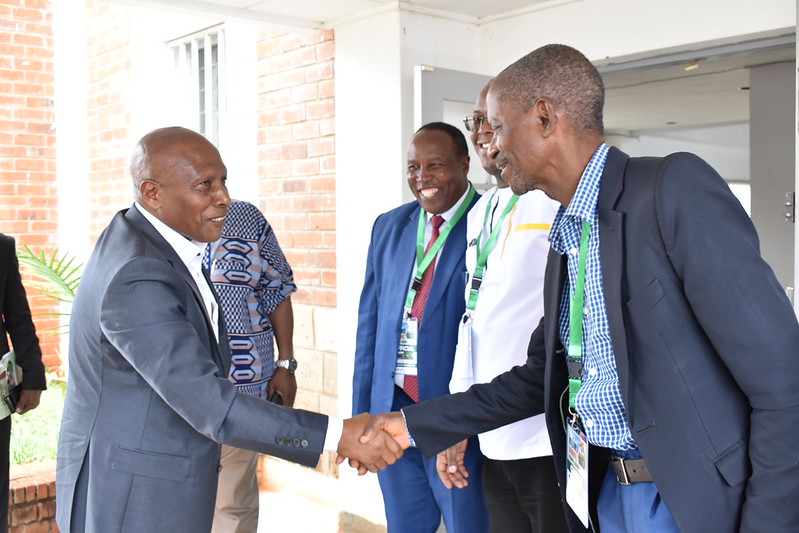
Looking Ahead
As part of the ongoing efforts to scale these innovations, TAAT and KALRO are working closely with stakeholders to promote adoption beyond demonstration, including through training sessions, policy dialogues, and showcasing success stories.
Plans are underway to expand the reach of these technologies to other African countries, bolstered by potential new partnerships, funding windows, and pilot programs tailored to regional needs.
By investing in sustainable, adaptable, and scalable technologies, TAAT is not only scaling new technologies but also preserving traditional crops and redefining their role in Africa’s food systems transformation, as seen in the Sorghum and Millet Compact’s efforts.
Cultivating Engagement and Harvesting Feedback
The Kilimo Biashara Expo successfully attracted a broad and engaged audience, with over 2,500 enthusiastic farmers in attendance, many of whom expressed profound interest in the showcased technologies.
The dynamic interaction between dedicated scientists and experienced farmers cultivated a rich environment conducive to learning and invaluable knowledge exchange.
One appreciative farmer shared, “I am truly delighted with the wealth of knowledge I have gained today; this expo provides a remarkable opportunity to engage directly with the latest advancements shaping the agriculture sector.”
Recognition Blooms and Partnerships Flourish
A significant highlight of the expo was the well-deserved recognition of TAAT as the Overall Best Exhibitor.
This prestigious accolade underscored the unwavering dedication and tireless efforts of the entire TAAT team and its esteemed partners in championing and disseminating innovative agricultural solutions.
The event concluded with a renewed commitment to supporting farmers in their journey of adopting new technologies and progressive practices, aiming to strengthen food security throughout the region.
The Kilimo Biashara Expo went beyond its role as a mere platform for showcasing agricultural innovations, serving as a vibrant celebration of the collective resolve to transform the agricultural landscape across East Africa.
As one insightful speaker aptly stated, “The intricacies of scientific discovery within the laboratory often gain profound clarity when brought to this setting, where effective communication in a language understood by farmers becomes paramount.”
The valuable insights gleaned during the expo are poised to catalyse further meaningful collaborations and amplify the positive impact of TAAT initiatives throughout the region.
